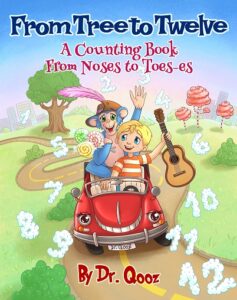My child doesn’t want to read!
Reading is an essential skill that plays a vital role in a child’s academic and personal development. However, some children struggle to develop an interest in reading, which can hinder their progress and academic success. Fortunately, there are solutions to help nonreading children get interested in reading again.
One effective solution is to find age-appropriate children’s books that match your child’s interests. Whether your child enjoys science fiction, animals, or sports, there is a book out there that can capture their attention and imagination. Picture books, in particular, can be an excellent choice for nonreading children, as they combine engaging visuals with text to make the reading experience more enjoyable and accessible.
Another great resource to consider is Dr. Qooz, an online platform that offers a range of children’s books designed to promote early literacy and language development.
 Dr. Qooz books are interactive and engaging, featuring fun characters and colorful illustrations that can help children develop their reading skills and cultivate a love of reading.
Dr. Qooz books are interactive and engaging, featuring fun characters and colorful illustrations that can help children develop their reading skills and cultivate a love of reading.
In addition to children’s books, there are many online tools and resources available that can help nonreading children develop their reading skills. For example, the website Starfall.com offers interactive games and activities that can help children learn the alphabet, phonics, and basic reading skills. The site also includes downloadable worksheets and lesson plans for parents and educators.
Another excellent online resource is the YouTube channel Super Simple Songs, which features songs and videos for young children. The channel includes sing-along videos and animations that can help children develop their reading skills while having fun.
When it comes to enunciation strategies, there are several techniques that can help nonreading children improve their reading skills. One effective strategy is to encourage children to sound out words as they read. This technique can help them break down unfamiliar words and develop their phonemic awareness.
Another helpful strategy is to read slowly and take one’s time. This technique can help children focus on the words and understand the meaning of the text. Additionally, using expression while reading can make the story more engaging and help children understand the emotions of the characters.
-
Reading aloud to a child is the most effective way to convert them into a successful reader.

- Recognizing words by sight and sound come easier when you read aloud to the child.
- Taking turns reading with your child can help build their confidence as they read aloud. This strategy can help children develop their reading skills and become more comfortable with reading.
In conclusion, finding age-appropriate children’s books and incorporating online tools and enunciation strategies can help nonreading children develop an interest in reading. Picture books, Dr. Qooz, and Super Simple Songs are great resources to consider, along with websites like Starfall.com that offer interactive games and activities to help children develop their reading skills. By using these resources and techniques, parents and caregivers can help their nonreading children become confident readers and enjoy the many benefits of this essential skill.

